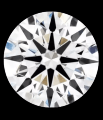Throughout history, diamonds have been prized as tangible symbols of prestige and wealth. However, like any other commodity, their monetary value has varied over time due to market fluctuations, such as supply and demand.
Similar to gold, silver, and platinum, the value of diamonds fluctuates based on market demand. For example, when new diamond mines are discovered, the increased supply causes diamond prices to drop. Conversely, when the demand for diamonds rises, their value increases according to the laws of supply and demand.
Diamonds are often considered a wise investment because their market value typically remains stable or increases over time due to the limited natural supply. If you purchase a high-quality natural diamond at a fair price and take proper care of it, you can expect to see a gradual rise in its overall value.
In contrast, lab-grown diamonds are less predictable in terms of their resale value. While they are physically and optically identical to natural diamonds, they do not have a finite supply. As a result, they do not offer the same level of resale value as natural diamonds.










